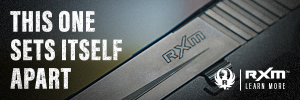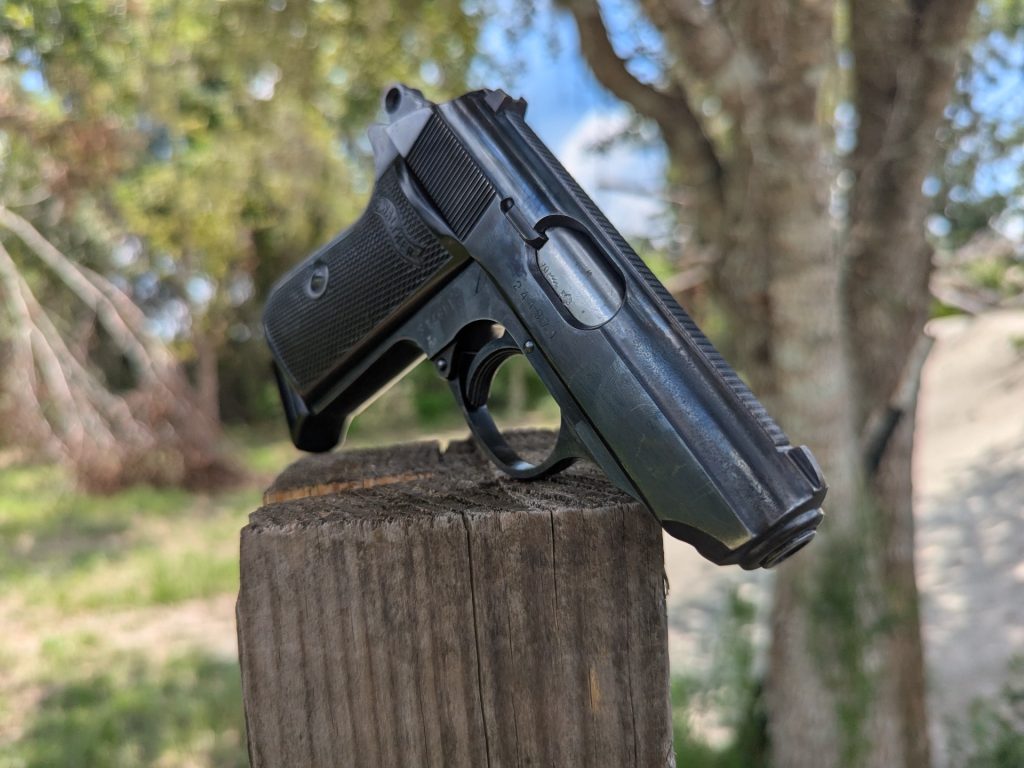
The Walther PP series was created in 1929. The series evolved into the more compact model, the PPK, which eventually became the PPK/s. The PPK was insanely popular and got a huge boost in the public mind because, of course, James Bond carried one.
Bond carried a Walther PPK in .32 ACP. That came at the suggestion of real real-life arms expert Geoffrey Boothroyd. Mr. Boothroyd wrote Ian Fleming, letting him know the Beretta 418 chambered in .25 ACP that Bond was first issued was too weak for a man with a License to Kill.
During the time the Walther PPK gained popularity, the American anti-gun movement was gaining momentum. In 1968, the Gun Control Act was signed into law, implementing a point system to rate firearms being imported.
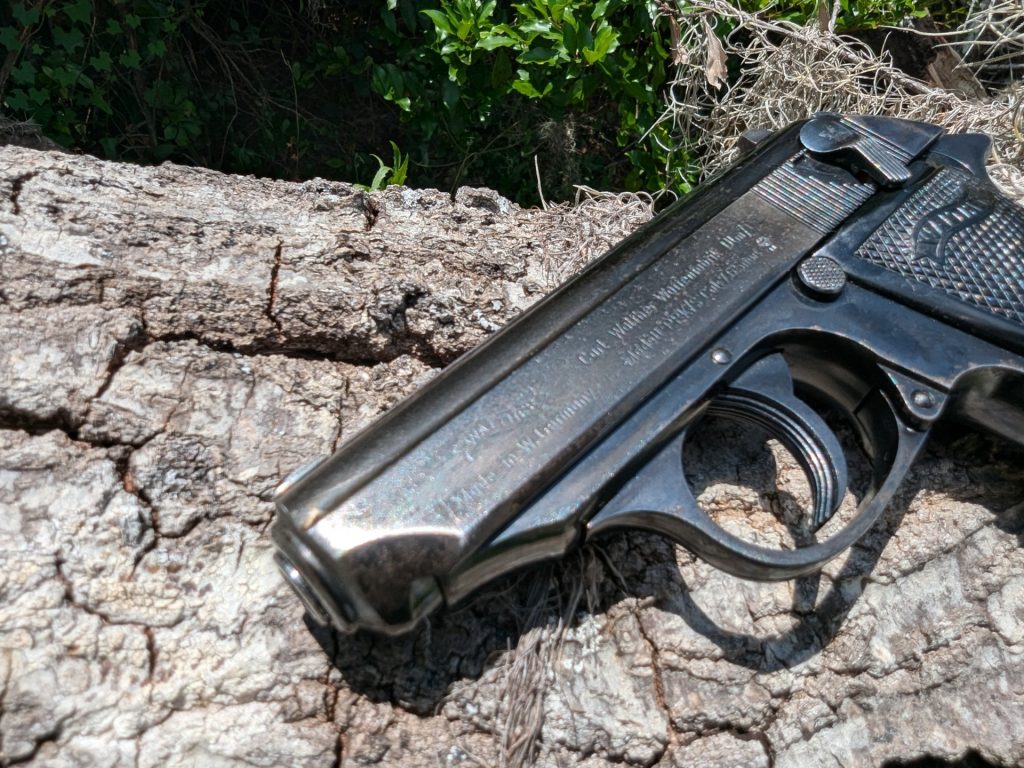
This system was designed to restrict the import of smaller firearms, which were considered less suitable for “sporting purposes.” Unfortunately, the PPK, due to its compact size, couldn’t accumulate enough points to be considered sporting use under the system.
As a result of the GCA’s restrictions, Walther was compelled to modify the PPK. They combined the longer grip of the PP with the slide of the PPK, resulting in the creation of the PPK/s. This slightly larger version of the PPK was able to accumulate enough points under the GCA’s scoring system thanks to its increased weight. While the PPK/s is most commonly known as a .380 ACP gun, it truly shines when chambered in .32 ACP. As a fan of .32 ACP, I was thrilled to find a .32 ACP Walther PPK/s and immediately acquired it.
The PPK/s and .32 ACP – Shaken, Not Stirred
What’s the fundamental problem with the Walther PP series? Juvenile PP jokes are, of course, at the forefront, but the real functional problem comes from using a straight blowback system. Blowback transmits every little bit of felt recoil a cartridge can muster. The Walther PPK/s uses a straight blowback system with a reasonably svelte slide and a robust recoil spring.
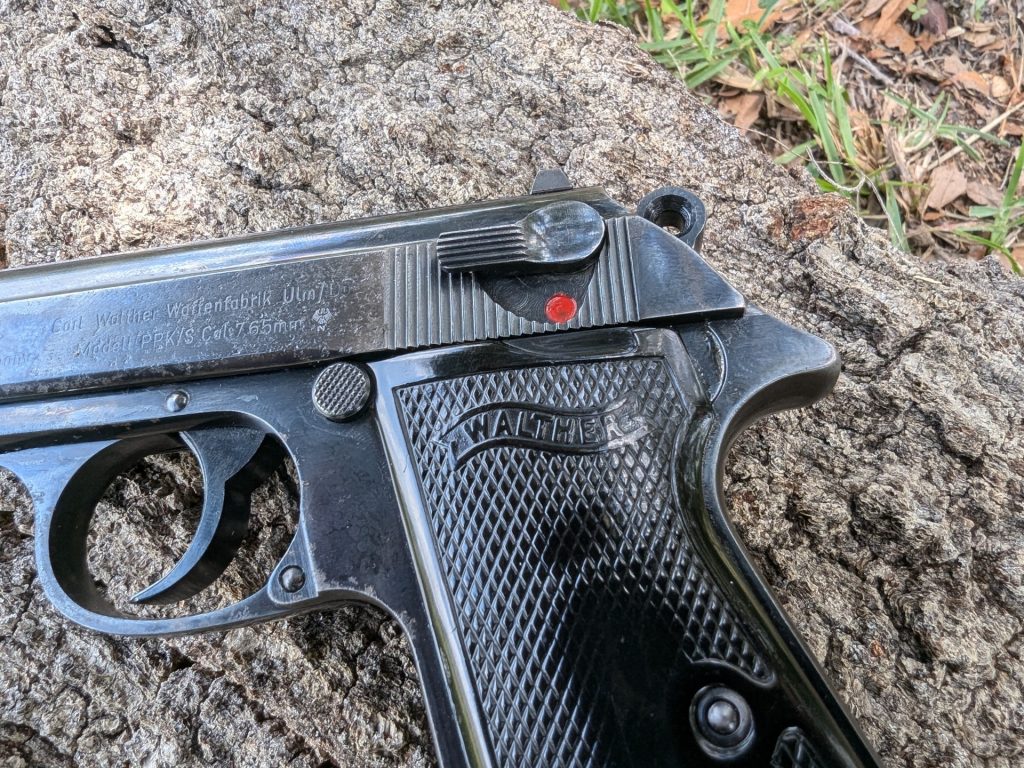
The pistol’s somewhat light slide results in more recoil than most other blowback firearms. Guns like Hi-Points use a massively chunky slide that takes some of the sting out of the design. With Walther using a hefty recoil spring it’s downright uncomfortable to shoot in .380 ACP. The .380 ACP PPK/s offers twice the felt recoil of .32 ACP without twice the ballistic advantage.
When you get into the .32 ACP version of the gun, you’re getting the same blowback system with a lot less blowback. That results in a much more pleasant and easy-shooting handgun. You’re still getting a centerfire cartridge that can penetrate deep enough to matter. Pair the PPK/s with 71-grain FMJs, and you get a cartridge that reaches the vitals and stops a threat. There’s even an additional round in the magazine, making nine in total.
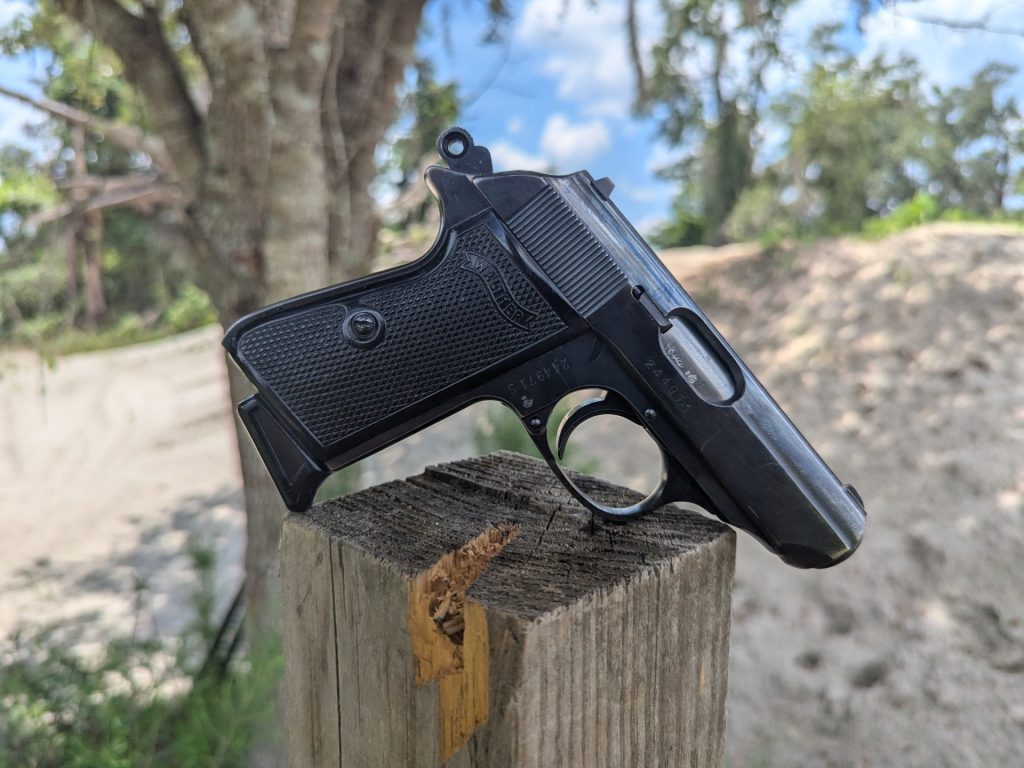
While some may want the added oomph of the .380, it isn’t worth the pain, at least in my book. The .32 ACP has such little recoil it doesn’t feel much different than a rimfire version of the PPK/s.
The PPK/s At the Range
The West German SIGs are much lauded, but I’m not sure if Walthers from the fatherland get the same extra points. It’s certainly a cooler provenance than Arkansas, which is where the current models are made. It’s important to remember that the PPK/s was designed for the American market with some Americanized features. Walther avoided the European-style heel magazine release, giving us the American button location behind the trigger.

The safety doubles as a de-cocker and is slide-mounted. I’m not a fan of slide-mounted safeties, but the PPK/s has one that works well. It’s easy to reach due to the gun’s small size, and it’s easy to manipulate with the thumb. The longer grip fills the hand well and gives you plenty to hold onto. The plastic grip panels do their job, but I think I might swap them for a wood set just because.

While those plastic grips are mostly fine, the summer heat has hit Florida hard. Fifteen minutes shooting in the sun has me drenched, hands included. Those little grips become slippery quickly, but the gun’s light recoil doesn’t make it too tough to hold.
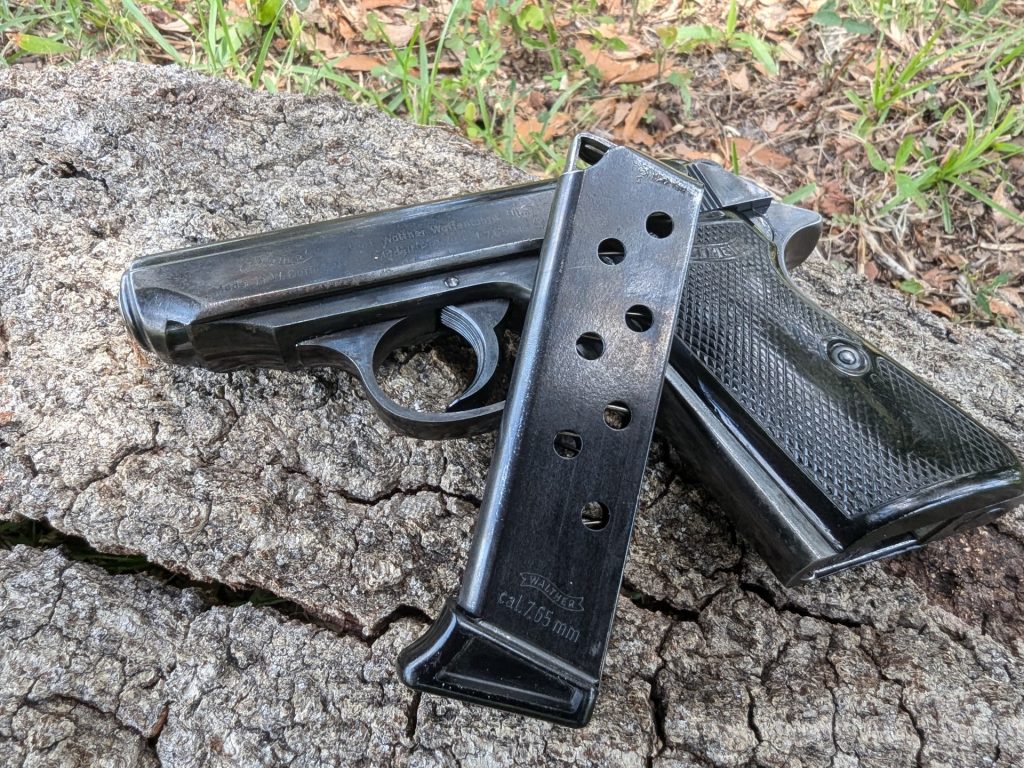
The hammer is well textured and easy to thumb cock if you prefer to avoid the double-action trigger pull. And it’s understandable why someone would avoid that DA trigger pull.
A Heavy Trigger
It’s easy to forget how bad the older Walthers’ triggers are. The double action pull is all wall. It’s just lots of pull weight…and then boom. The pull is surprisingly short for a double action, just absurdly heavy. My Lyman trigger scale only goes to 12 pounds and the PPK/s exceeded that substantially. The heavy double-action trigger and minimalist sights make the gun slow to fire on the draw.
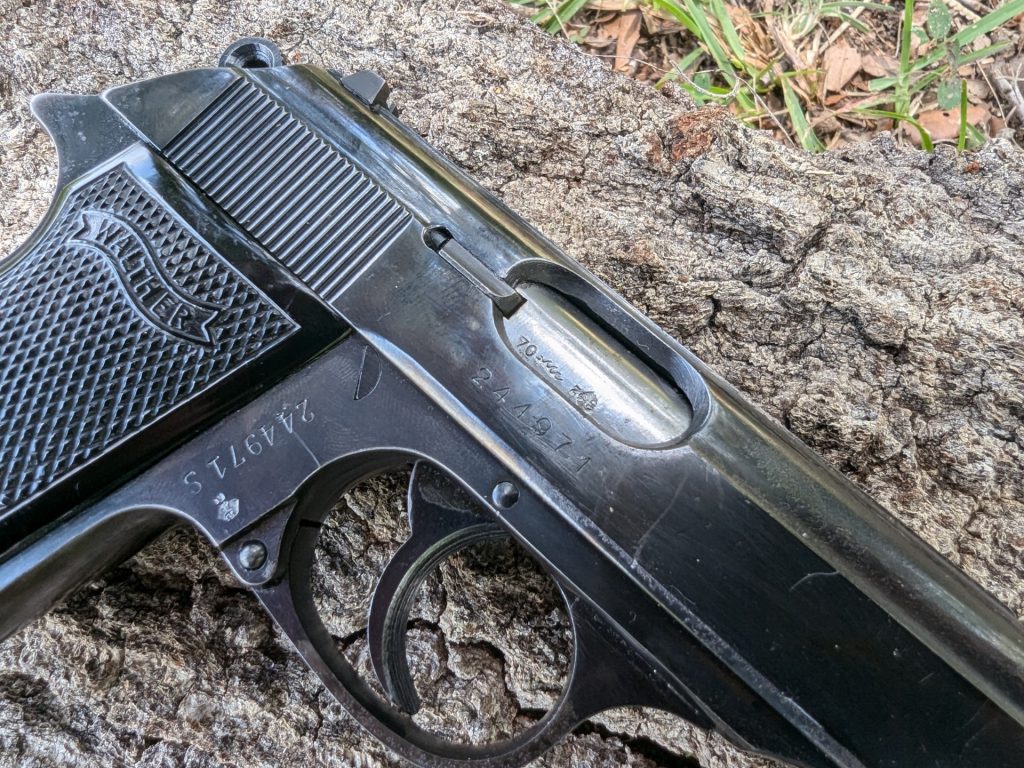
Single action, as you’d expect, grants us a big improvement, but it’s no 1911. It feels like I’m squeezing an orange. It’s much lighter but still relatively heavy for a single action. With a good grip and a take-your-time sight picture, the PPK/s is capable of impressive accuracy. The fixed barrel is one of the design’s benefits.
At 15 yards, I’m creating little palm-sized groups that rarely exceed three inches. If I back up to 25 yards, I can still hit a 10-inch gong with regularity. I even hit the eight and six-inch gong without much difficulty. I just have to go slowly. A set of bigger, easier-to-see sights would do wonders for the gun.
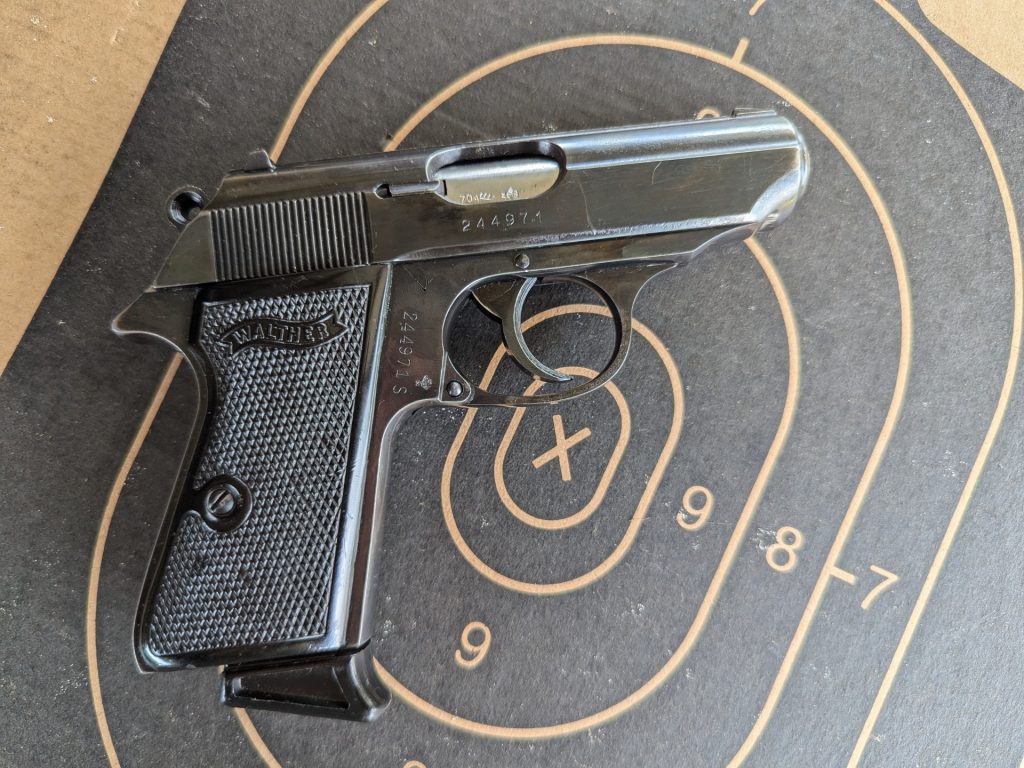
As is, up close and in a more practical defensive scenario, the gun does a good job of putting lead where you want it. With something like a Bill drill, I’m able to put six rounds of .32 ACP into an A-zone from the draw in less than three seconds. My fastest time was 2.63 from a concealed position. What tends to slow me down is finding that front sight and working the hefty DA trigger pull. I’d have no problem carrying hammer down, safety off with a trigger this heavy.
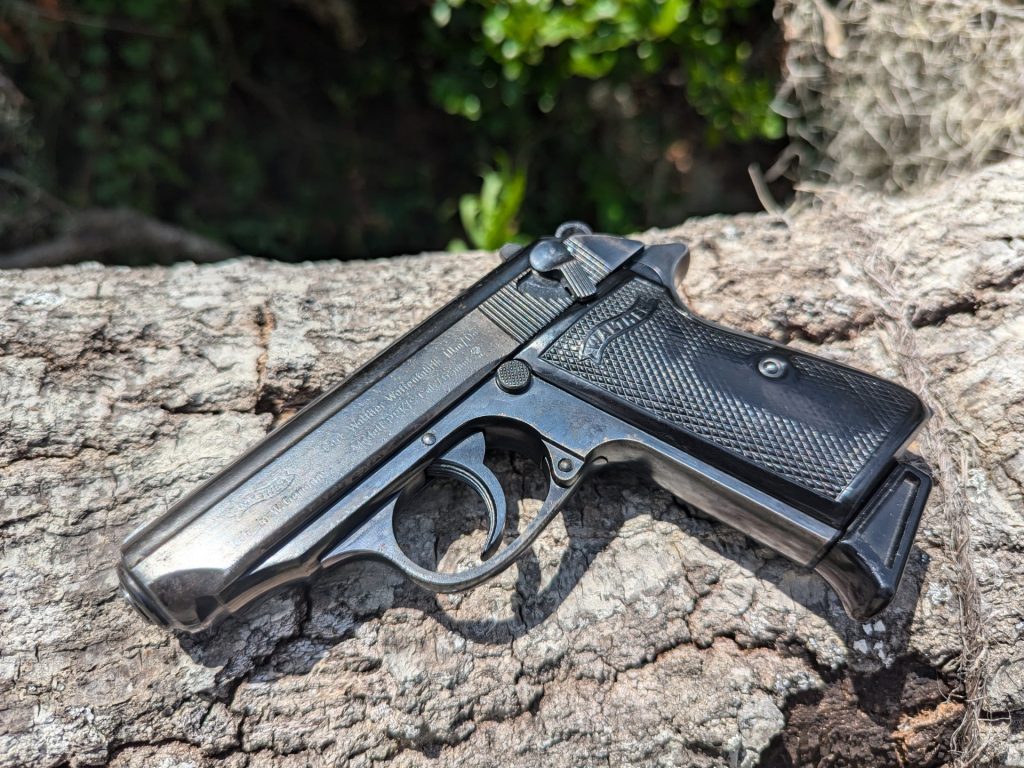
The PPK/s Today
While I enjoy shooting the gun and believe it could be a man-stopper if needed, this is not a gun I carry. I would, if necessary, but in a day and age where I can pack ten rounds of 9mm in a SIG P365 with an optic, my PPK/s is more for James Bond LARPing. That said, it has a nice, svelte design, so it carries nicely and conceals really well.
While I prefer my SIG, I don’t think you’re under-armed with a PPK/s in .32 ACP. In fact, I’d much rather have the PPK/s in .32 than .380 for defensive use any day of the week.

